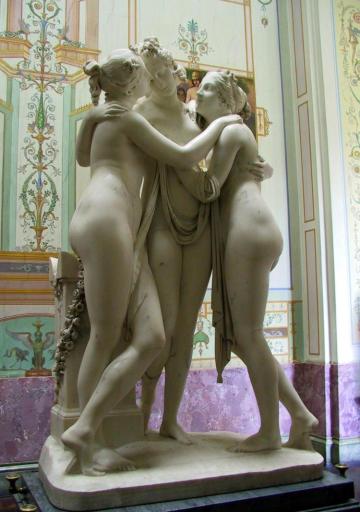Three Graces |
|||||||||
|---|---|---|---|---|---|---|---|---|---|
| Primary Creator |
|
||||||||
| Contributor(s) |
|
||||||||
| Properties |
|
||||||||
| Name of Work | Three Graces | ||||||||
| Production Date | 1814 | ||||||||
| Production Location |
|
||||||||
| Current Location |
|
||||||||
| Media Types | |||||||||
| General Notes | There are two nearly identical carved versions of this work. One in the Hermitage Museum, and another in England that is owned by the Victoria and Albert in congress with the National Museum of Scotland. | ||||||||
Description
A composition of three nubile young women cut from a single slab of marble. The three figures are intended to be the three sisters "The Graces" of mythological story, namely the daughters of Zeus, aka the three charities. However, leaving aside largely irrelevent symbolic meanings of mythology, the work is showing the exquisite beauty of the young female form in multiple poses. It also somewhat ambigously shows the tender relationship between the three women as vaguely sisterly or friendly, though the fact that they are nude and decorously draped with a cloth to shield their private parts lends an unclarity to the composition.
Theme
Quiet repose and sisterly love. The piece exudes a quiet elegance and peacefulness amidst the complex three-dimensional composition. The inclusion of "sisterly love" is less certain, except that taking into account the mythological background of the piece. It can be argued that one should not take that into account, so perhaps that should not formally be included in the theme.
Emotional Sum or Sense-of-life
The female human form is beautiful, graceful, ideal.
Context Information
Tags

Scale
